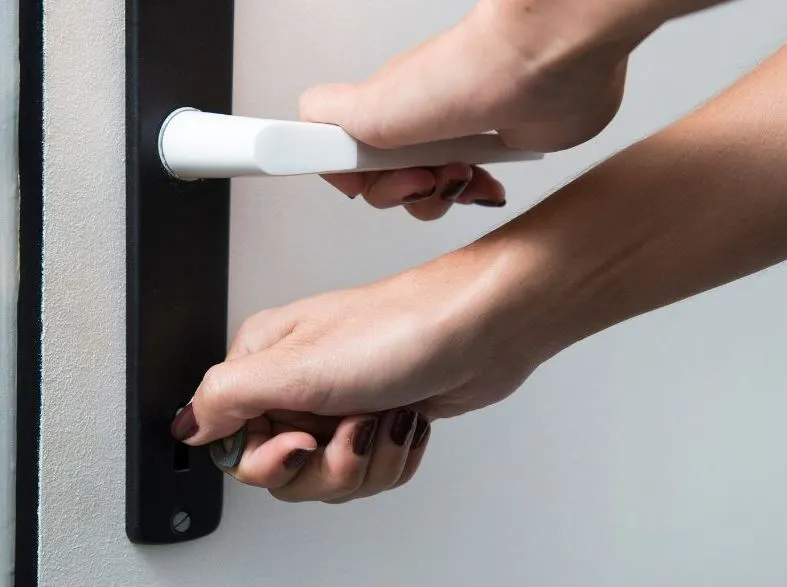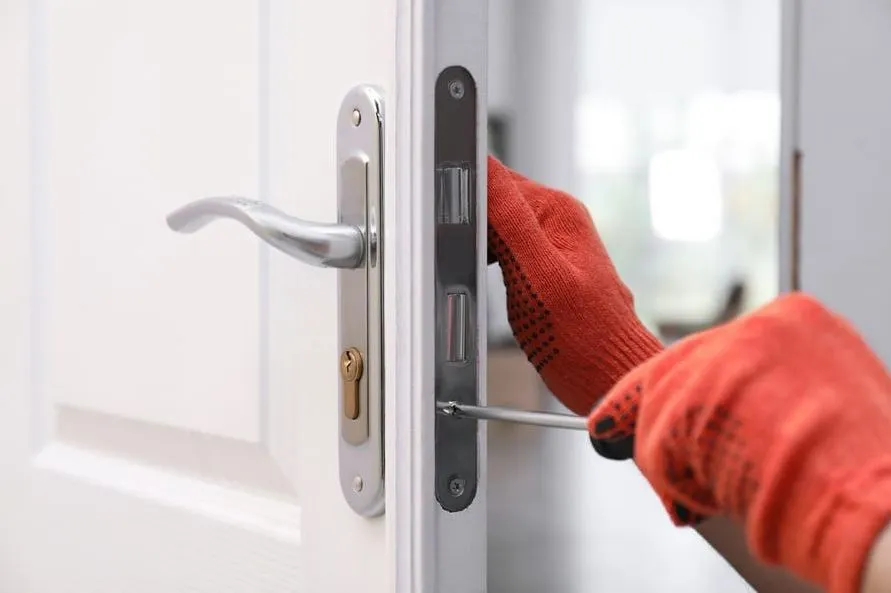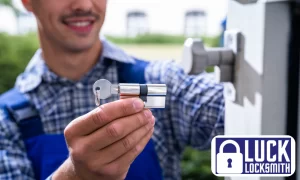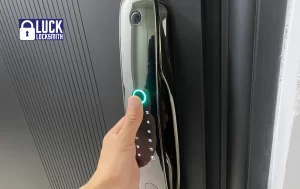Locks are vital for protecting your house, workplace, and valuables. Over time, they can enjoy wear and tear, leading to malfunctions or complete failure. Regular lock protection is essential to making sure your locks paint properly whilst you want them maximum. But how do you whilst your locks need interest? In this guide, we’ll walk you through the not-unusual symptoms that indicate your lock needs renovation, and offer professional recommendations on a way to restorative them—whether you’re coping with it yourself or calling inside the pros at Luck Locksmith.
The Lock Is Hard to Turn or Operate
Sign:
If you find yourself struggling to turn the key or engage the lock, that is one of the maximum obvious signs and symptoms that something is inaccurate. A stiff or jammed lock is frequently the result of dirt buildup, rust, or wear within the internal mechanisms.
Causes:
- Accumulation of dust, dirt, or debris within the lock
- Rust or corrosion within the locking mechanism
- Broken or tired internal components
How to Fix It:
If the difficulty is minor, you may try some quick answers:
- Lubricate the Lock: Use a graphite-based total lubricant (avoid oil-based merchandise like WD-40, as they could entice greater dust). Insert the lubricant into the keyhole and lightly paint the important thing in and out.
- Clean the Lock: If dirt buildup is causing the stiffness, use compressed air to blow out any debris or use a small brush to smooth the keyhole and surrounding region.
- Replace Worn Parts: If the hassle persists, you may want to replace the internal pins or springs. This can also require expert help from a locksmith like Luck Locksmith.
Key Is Sticking or Jamming

Sign:
If your key feels stuck whilst you attempt to insert it into the lock or it gets jammed midway, this could be a sign that the lock is misaligned or there is an issue with the inner pins.
Causes:
- Misalignment of the locking mechanism
- Dirt or particles preventing clean key insertion
- A broken or worn-out key
How to Fix It:
- Clean the Lock and Key: Gently ease the important thing with fabric and dispose of any dirt from the keyhole. Also, use compressed air to blow out any debris inside the lock.
- Check the Key for Damage: Inspect the important thing for any signs and symptoms of bending, wear, or damage. If the key’s broken, it could need to be replaced.
- Realign the Lock: If the lock mechanism is misaligned, you could want to reposition it or alter the strike plate. This is first-class left to an expert locksmith for safety and accuracy.
The Lock Is Loose or Wobbly
Sign:
A lock that feels free or wobbly should imply that the mounting screws are free or the lock has shifted in the doorframe. This can compromise the security of your private home and can result in further harm.
Causes:
- Loose or missing screws
- Deformation of the door or body across the lock
- Worn-out lock frame
How to Fix It:
- Tighten the Screws: Check and tighten the screws that preserve the lock-in location. If any screws are stripped, update them with new ones.
- Realign the Lock: If the lock is misaligned, reposition it so it suits securely into the doorframe. If you’re uncertain how to do this, Luck Locksmith can help with specific alignment and installation.
- Check the Door Frame: If the door has grown to be warped or the body is damaged, this could also be contributing to the hassle. A door frame restoration may be necessary.
The Lock Doesn’t Latch Properly

Sign:
If the lock doesn’t properly latch or the bolt doesn’t interact completely when you turn the key, this will be a major security concern. It can also leave your private home vulnerable to unauthorized get entry.
Causes:
- Misalignment between the latch and strike plate
- Worn-out or broken latch mechanism
- The build-up of dirt or rust in the mechanism
How to Fix It:
- Adjust the Strike Plate: Check the alignment of the strike plate and the latch. If they may be misaligned, modify the location of the strike plate on the doorframe so the latch can engage well.
- Lubricate the Lock Mechanism: Apply lubricant to the latch and the internal shifting components. This can assist in easing out the motion and making certain of the right latching.
- Replace the Latch or Mechanism: If the latch is wiped out or broken, it could need to be replaced. A locksmith can install a new latch mechanism for better functionality.
The Lock Doesn’t Respond to the Key
Sign:
If you locate that the lock doesn’t respond in any respect to the important thing, it may be a sign of an internal failure, damaged pins, or a broken keyhole. This may also be a problem with the important thing itself, which includes wrong key duplication.
Causes:
- Broken internal pins or springs
- A worn-out or improperly cut key
- Faulty key duplication
How to Fix It:
- Check the Key: Ensure the key is not worn or broken. If vital, have a brand new key made or the modern key reshaped.
- Test the Lock: Try a spare key to peer if it resolves the problem. If the trouble persists with both keys, the lock mechanism can also need to be replaced or repaired.
- Call a Locksmith: If the lock is unresponsive, it could require internal upkeep, that’s high-quality and handled via an expert locksmith from Luck Locksmith.
Rust or Corrosion Appears at the Lock
Sign:
Rust or corrosion outdoors of a lock is not the handiest unpleasant but also can compromise the capability of the lock. Over time, rust can spread in the lock, affecting the inner components.
Causes:
- Exposure to moisture or outside elements
- Lack of regular upkeep
How to Fix It:
- Clean the Rust: For minor surface rust, use an exceptional metal wool pad or a rust remover to smooth the lock. Be certain to wipe away any residue afterward.
- Lubricate the Lock: After cleansing, follow a lubricant to prevent in addition rusting and ensure smooth operation.
- Replace the Lock: If the rust is good sized and affects the internal additives, the lock may additionally need to be replaced totally.
The Lock Is Making Strange Noises
Sign:
If your lock starts offevolved making grinding, squeaking, or damn noises while you turn the important thing or function the manage, it can suggest that inner parts are wiped out or broken.
Causes:
- Worn internal additives, consisting of pins or springs
- Lack of lubrication
- Foreign objects trapped inside the lock
How to Fix It:
- Lubricate the Lock: Apply a graphite-based total lubricant to the internal components to reduce friction and dispose of squeaks or grinding sounds.
- Inspect for Debris: Use compressed air to take away any dust, dirt, or debris trapped in the lock.
- Consult a Locksmith: If the noise is maintained, the inner additives may also require professional inspection or replacement.
When to Call Luck Locksmith
While a lot of those fixes can be handled with a DIY technique, some lock problems are first-rate and left to the professionals. If you’re uncertain about the reason for the difficulty, or if the lock is malfunctioning in methods that pose a security danger, don’t hesitate to name Luck Locksmith. Our expert locksmiths can diagnose the problem, provide maintenance, and even update locks if necessary to ensure the safety and protection of your house.
Conclusion
Regular lock protection is fundamental to stopping luxurious upkeep and ensuring your house remains stable. By watching out for symptoms that your locks need attention—like stiffness, key jams, rust, or peculiar noises—you can address problems before they grow to be critical troubles. Whether you select to tackle minor fixes yourself or call in the experts at Luck Locksmith, keeping your locks nicely maintained will assist shield what subjects maximum.
If you want expert advice or service, don’t hesitate to reach out to Luck Locksmith for all of your lock and safety desires.




